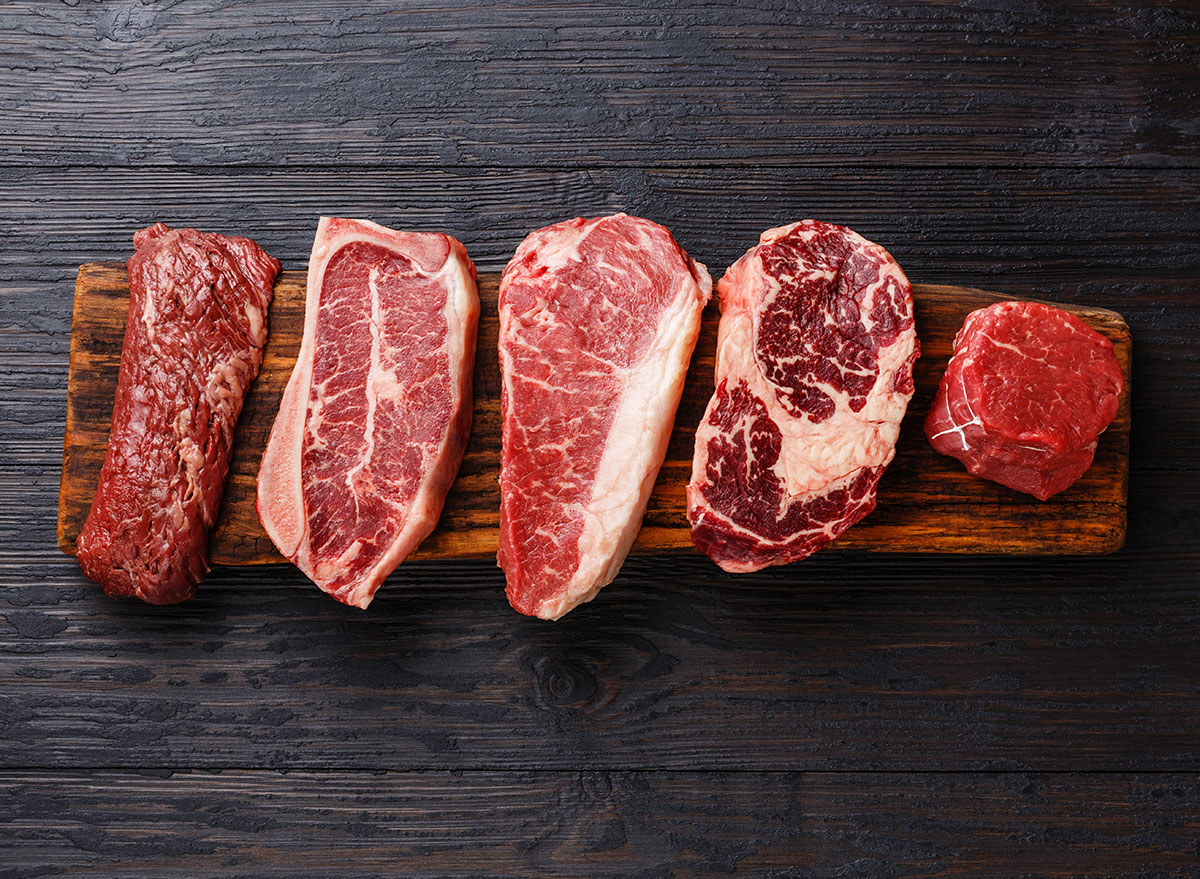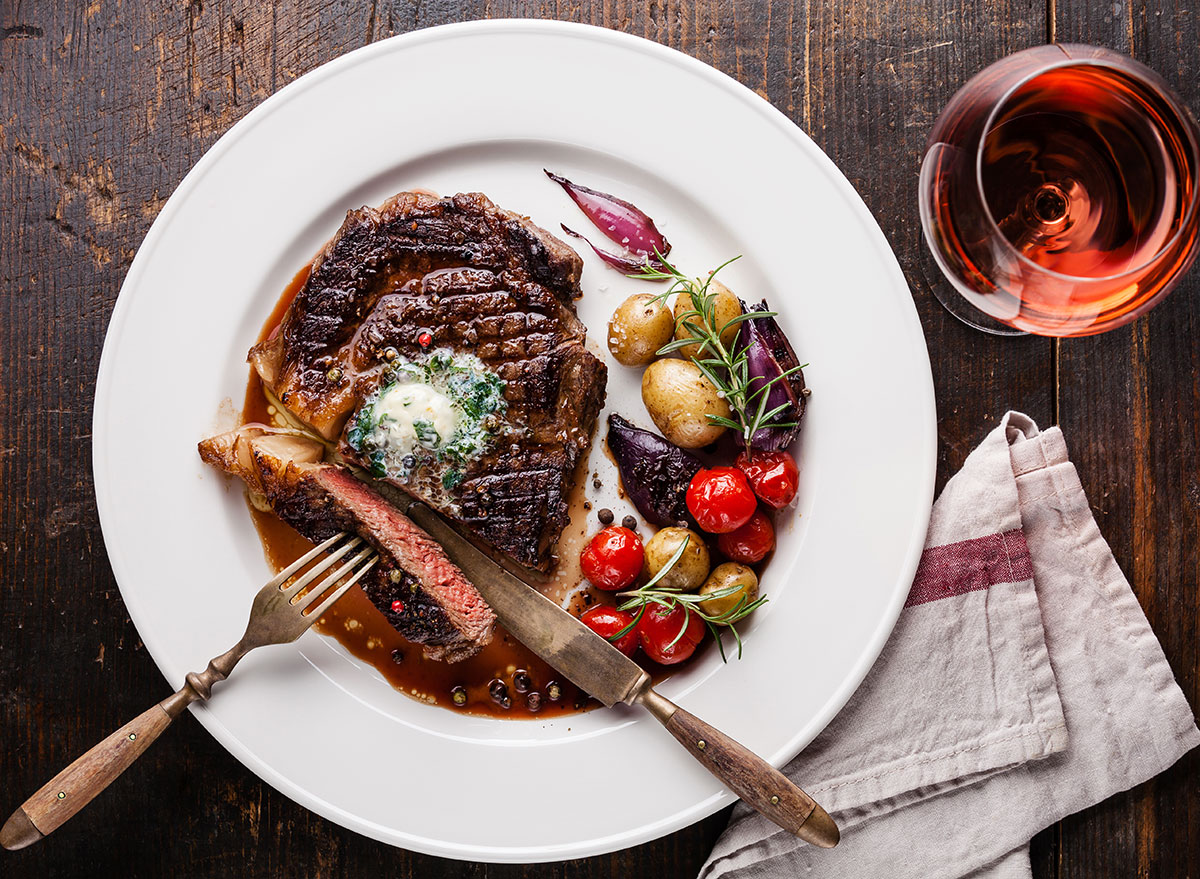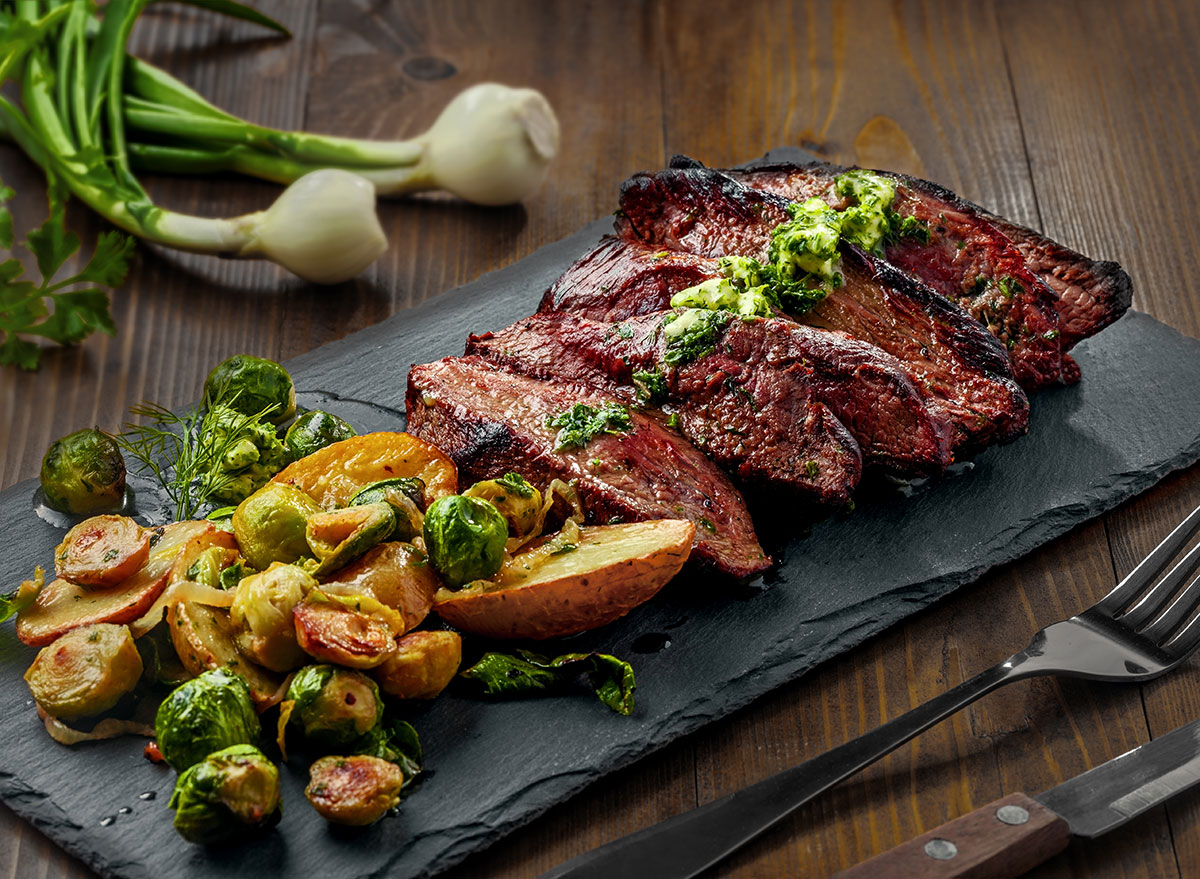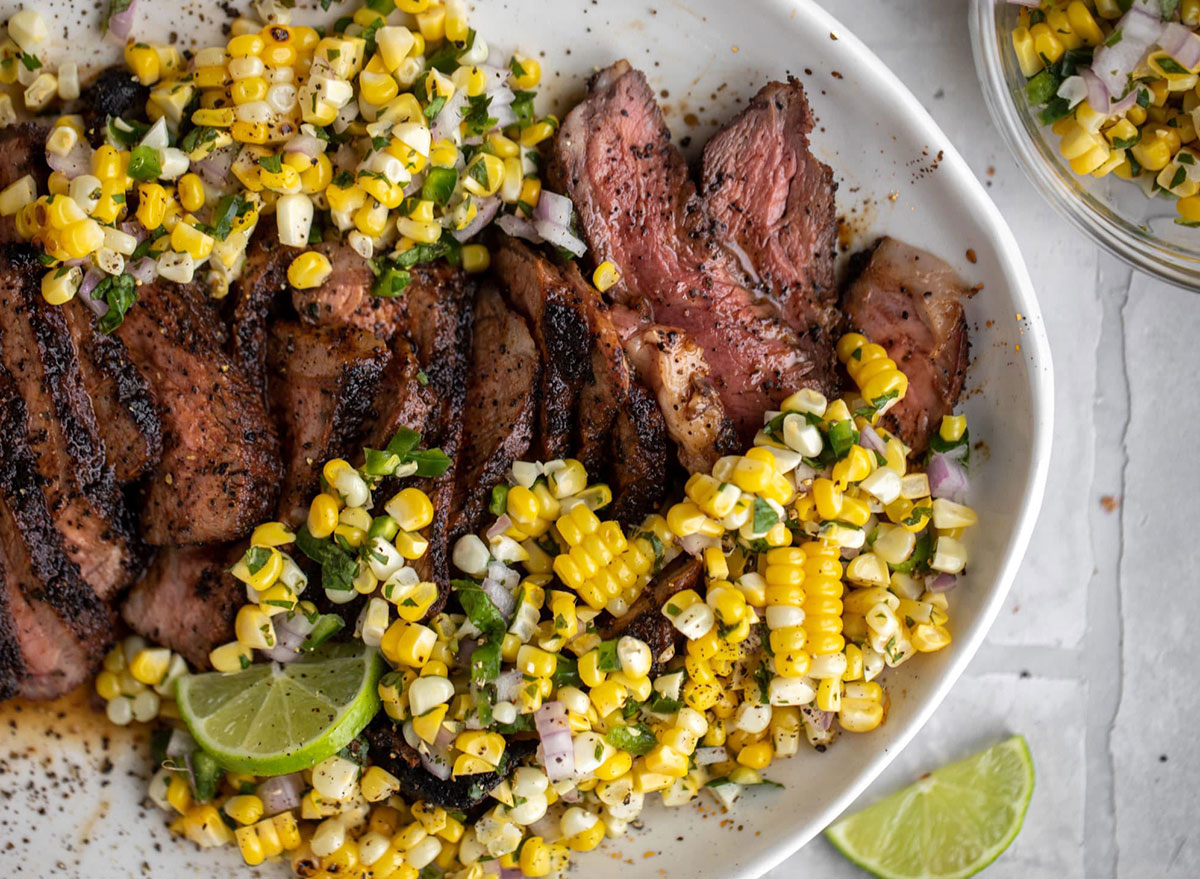Red meat doesn't have to be as scary as some people say it is. Sure, many Americans probably consume a bit too much of it. But in moderation and with the right selection of meat, it can actually benefit our health in many ways.
"Red meat, including beef, pork, and lamb can absolutely be part of a healthy dietary pattern," says Toby Amidor, MS, RD, CDN, FAND, author of The Family Immunity Cookbook, and a member of our medical expert board. "In fact, in the 2020-2025 Dietary Guidelines for Americans, lean cuts of beef are included in both the U.S. Healthy Dietary Pattern and Mediterranean Dietary Pattern."
Although it can be a healthy part of our diet, there are a few important factors to consider that determine how healthy (or unhealthy) red meat can be. Once we become educated on what these factors are, we can have more confidence when we go to cook a deliciously juicy steak for ourselves.
Here's what you need to know when it comes to red meat, and for even more healthy eating tips, make sure to check out The 7 Healthiest Foods to Eat Right Now.

According to Amidor, one of the most important things to take into consideration with red meat is which type you're choosing. With the long list of cuts to choose from, including everything from New York Strip to T-bone to Skirt Steak, it can be intimidating to know where to start.
"I like to use online guides that tell you all about different cuts—if each one is lean per the FDA's definition, the best way or ways to cook it, nutritional info, and recipes to try as well," says Amidor.
She also mentions that certain types of red meat, like bacon and sausage, should be consumed rarely or just for special occasions.
"These processed meats contain high amounts of artery-clogging saturated fats," says Amidor. "By becoming educated on leaner cuts of various meats, you can certainly include them into a healthy eating plan."
Here are the 17 Best Healthy Steak Recipes.

With red meat, your portion sizes play a key role in determining whether or not it's "healthy."
"Your slice of beef should be about 3 ounces cooked and complemented with lots of plant-based foods such as whole grains, vegetables, fruit, nuts, and seeds."
This balance is the key to success with eating red meat, and Amidor reminds us that "there are nutrients found in red meat that aren't plentiful in plant foods and vice versa, so balancing them out results in a greater intake of various nutrients your body needs to stay healthy."
RELATED: Get even more healthy tips straight to your inbox by signing up for our newsletter.

What some people may not realize is that how you prepare your meat also has a lot to do with how healthy or unhealthy it will be.
"Flavoring your meat with low-fat and low-calorie rubs or marinades, as well as using a lower-fat cooking method, can help make your red meat healthier," says Amidor, "for example, I like using a dry rub and grilling it when I can."
Try it yourself with these 5 Best Steak Marinade Ideas for the Juiciest Steak Ever.

For some healthy and delicious ways to cook red meat, Amidor suggests trying recipes including Beef and Sweet Potato Bowl, Rosemary Garlic Pork Loin, Healthy Grilled Mexican Steak Salad, and Flavor-Packed Bloody Mary Skirt Steak.
As you can see, unless you've been instructed by a doctor for specific medical reasons, you don't have to fully get rid of red meat if you love to eat it! It just comes down to the cut, how you cook it, and your portion sizes. Red meat can truly be healthy for you in moderation and as long as it's balanced out with your favorite plant-based foods.
For more healthy tips, read these next:
"eat" - Google News
October 30, 2021 at 07:13PM
https://ift.tt/3Bv2Kvd
The Final Verdict on Whether or Not Red Meat Is Bad For You — Eat This Not That - Eat This, Not That
"eat" - Google News
https://ift.tt/33WjFpI
https://ift.tt/2VWmZ3q
Bagikan Berita Ini














0 Response to "The Final Verdict on Whether or Not Red Meat Is Bad For You — Eat This Not That - Eat This, Not That"
Post a Comment